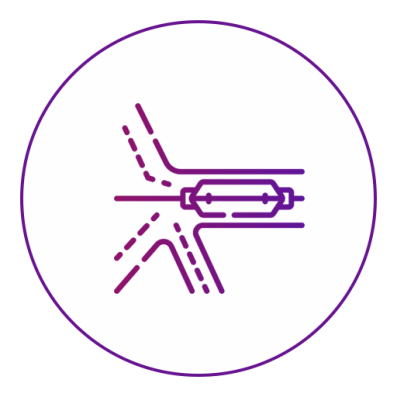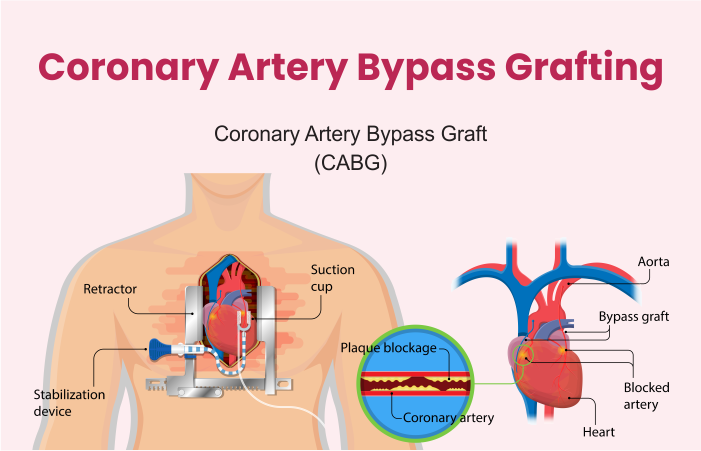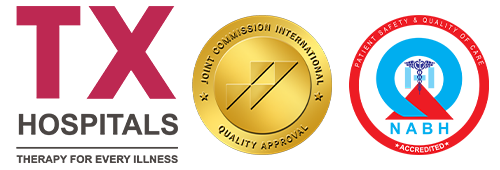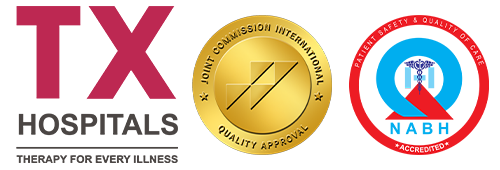Coronary Artery Bypass Grafting in Hyderabad

Coronary Artery Bypass Grafting
Coronary artery bypass grafting (CABG) is a surgical procedure used to improve blood flow to the heart muscle by bypassing blocked or narrowed coronary arteries. It involves taking healthy blood vessels, usually from the leg or chest, and grafting them onto the heart to create new pathways for blood to bypass the blocked or narrowed arteries. For a high success rate, CABG surgery visits TX Hospitals, Hyderabad.

Why Is Coronary Artery Bypass Grafting (CABG) Performed?
CABG is performed for several reasons:
- Coronary Artery Disease: It is commonly used to treat severe coronary artery disease, where the blood flow to the heart is significantly restricted due to the presence of blockages or narrowing in the coronary arteries.
- Angina Relief: CABG can help relieve angina (chest pain) that is not adequately controlled with medication or other treatments.
- Heart Attack Prevention: It can reduce the risk of heart attacks by restoring proper blood flow to the heart muscle.
- Heart Failure: In some cases, CABG may be performed to improve heart function in individuals with heart failure caused by coronary artery disease.
How to Prepare for Coronary Artery Bypass Grafting (CABG)
Preparing for CABG involves several steps:
- Medical Evaluation: You will undergo a comprehensive medical evaluation to assess your overall health, including blood tests, imaging scans, and cardiac assessments.
- Medication Management: Your healthcare team will review your current medications and make any necessary adjustments before surgery.
- Lifestyle Changes: Making lifestyle modifications, such as quitting smoking, improving your diet, and increasing physical activity, may be recommended to optimize surgical outcomes.
- Education and Counseling: You will receive information about the surgery, the recovery process, and potential risks and complications. This is an opportunity to address any concerns or questions you may have.
More About Coronary Artery Bypass Grafting (CABG)
Procedure Overview: CABG involves making an incision in the chest, harvesting a blood vessel graft (such as the saphenous vein or internal mammary artery), and attaching it to the blocked or narrowed coronary arteries to create new pathways for blood flow.
Types of Grafts: Different types of grafts can be used, including single grafts (one artery bypassed) or multiple grafts (two or more arteries bypassed).
Risks and Complications: While CABG is generally safe, there are risks associated with any surgical procedure, including bleeding, infection, blood clots, stroke, and complications related to anesthesia.
Recovery and Rehabilitation: After surgery, you will spend time in the hospital recovering before being discharged. Cardiac rehabilitation programs may be recommended to help you regain strength, manage risk factors, and promote a healthy lifestyle.
Consequences of Delaying Coronary Artery Bypass Grafting (CABG)
Progression of Heart Disease: Delaying CABG surgery can allow the underlying coronary artery disease to progress, potentially leading to more severe blockages, increased risk of heart attacks, and worsening symptoms.
Reduced Quality of Life: Uncontrolled chest pain, limited physical activity, and decreased overall well-being can persist if surgery is delayed, impacting your quality of life and daily functioning.
Increased Complications: In some cases, delaying CABG surgery may lead to increased risks during the procedure due to the progression of heart disease or the development of other health complications.
Frequently Asked Questions (FAQs)
CABG surgery is a procedure performed to treat coronary artery disease. It involves creating new pathways for blood flow to the heart by bypassing blocked or narrowed coronary arteries using grafts (blood vessels) from other parts of the body.
CABG surgery is typically recommended for individuals with severe coronary artery disease who have significant blockages or narrowing in their coronary arteries. It may be recommended for those experiencing symptoms such as angina (chest pain) that is not adequately controlled by medication or other treatments, or for those at high risk for a heart attack.
CABG surgery is performed under general anesthesia. The surgeon makes an incision in the chest to access the heart and grafts blood vessels, typically arteries or veins from the leg or chest, to bypass the blocked or narrowed coronary arteries. The grafts are attached to the coronary arteries, allowing blood to flow around the blockages.
The recovery process after CABG surgery involves a hospital stay of several days to a week, during which patients are closely monitored. Pain management, medications, and cardiac rehabilitation are important parts of the recovery. Patients gradually resume physical activity and are given guidelines for post-operative care. Full recovery may take several weeks to months.
CABG surgery, like any surgical procedure, carries risks and potential complications. These can include infection, bleeding, blood clots, stroke, kidney problems, irregular heart rhythms, and rarely, heart attack or death. Your surgeon will discuss the potential risks and complications with you prior to surgery.









